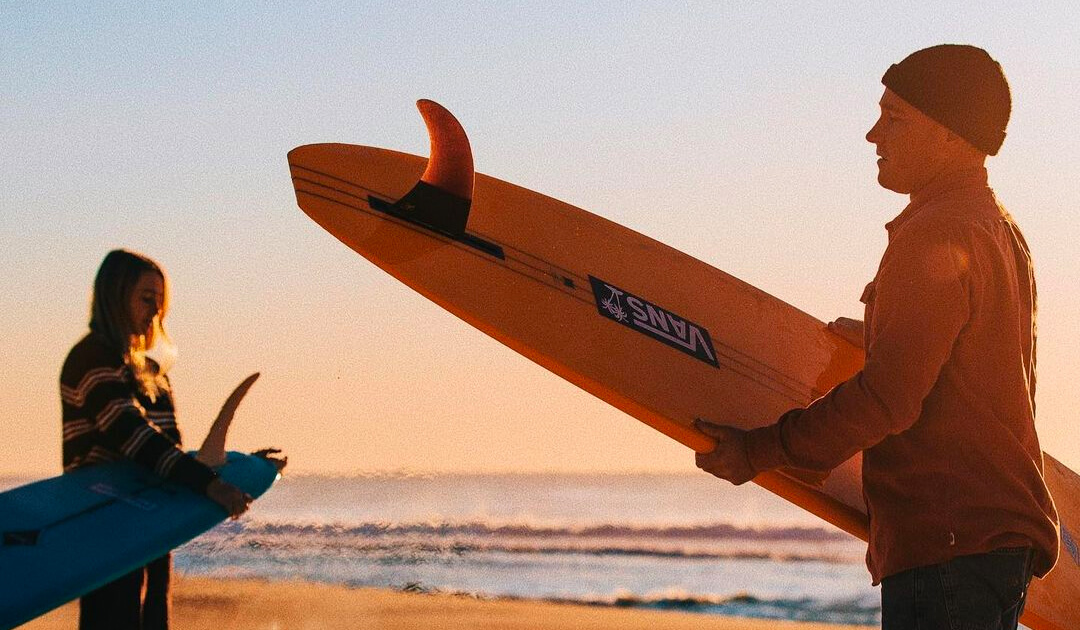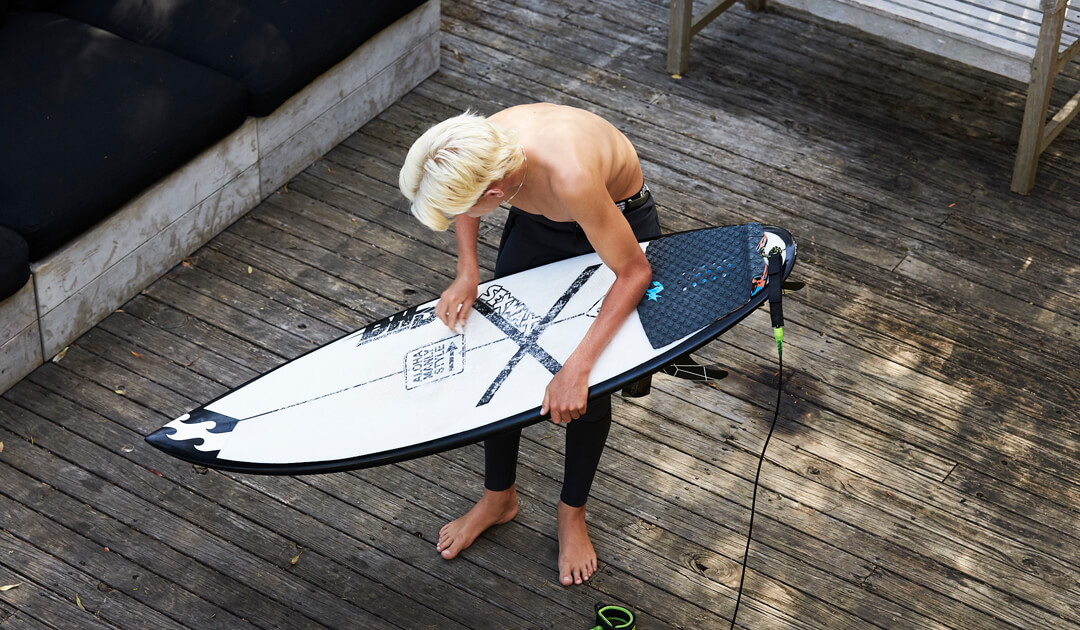What Size Surfboard Should I Get?
Some surfers equate surfboard size with a surfer’s skill level. After all, smaller surfboards do command better skills and more experience from their riders. But choosing what size surfboard to get is not only based on a surfer’s ability. With all being equal (surfer ability, physical conditioning), it is a decision based on whether the surfboard is the weapon of choice for specific surf conditions.
What size surfboard should I buy?
It’s no surprise that most surfers have more than one surfboard of varying shapes and sizes. Advanced and pro surfers, for example, always have a couple of surfboards ready just in case surf conditions suddenly change or when they're visiting a new location.
We will touch on the following points; scroll down or click to quickly jump to them:
- Surfboard Buying Tips for Beginners
- What Length Surfboard Should I Get?
- What Size Surfboard Should I Ride?
- What Size Surfboard Do I Need?
Surfboard buying tips for beginners
When it comes to selecting the perfect surfboard for beginners, the most important thing to look out for is its ability to float and catch waves. Surfboards with more volume (amount of space a surfboard occupies) are easier to balance and carry speed over softer waves where beginners usually take their first lessons.
Surfboard volume is calculated by multiplying the surfboard's length, width, and thickness. Therefore, a longer board does not necessarily have more volume compared to a shorter board. When it comes to surfboard size, just remember this: longer, wider, and thicker is better. When it comes to length, keep the board at least 1 foot taller than you.
The thickness of a board has a direct effect on its buoyancy or ability to float. One important thing to consider when checking the thickness of the board is your weight. A heavier person can affect the surfboard’s buoyancy. Keep within 2 to 3 inches of the recommended thickness for your weight.
Beginner surfboard checklist:
- Length – ideally longboards
- Width – the wider, the better
- Volume – high volume, better buoyancy
- Stable – easy to balance
- Easy to control
- Easy to paddle - to catch more waves
What length surfboard should I get?
Let’s compare two surfboards on the opposite side of the spectrum when it comes to length: longboards and shortboards. It will give us an idea of why these surfboards are designed this way and what makes them perfect for a specific surfer or condition.
Longboard
The longboard is ideal for nose riding and cruising – ‘hanging ten’ style. Longboards are typically 8 to 9 feet long with a rounded nose and come with a single fin. This single fin setup makes it easier to glide but makes them more challenging to manoeuvre. Nothing beats a longboard in ankle high waves or when the waves are small. Some pros and cons of longboards are:
Pros:- Offers more stability
- Better buoyancy because of volume
- Easier to paddle
- Perfect for catching smaller waves
- Heaviest of all surfboards
- Storage is difficult due to their size
- Difficult to make tight turns
- Hard to get out back (get past breaking waves)
 Pre-surf board inspection by Matt Chojnacki. Photo: Matty Dunbar.
Pre-surf board inspection by Matt Chojnacki. Photo: Matty Dunbar.
Shortboard
Modern shortboards are generally 5’6” to 6’6” long. These boards are usually used for high-performance surfing and could be used in a variety of wave conditions. Also called ‘thrusters,’ shortboards have a three-fin setup; hence, the name.
Pros:- Performance-wise, shortboards are faster and more responsive
- Lightweight and easy to carry
- Perfect for ‘duck diving’
- Can cut through the water easily, best for making sharp turns
- Prone to dings and damages because of their lightweight construction
- It takes effort to paddle, catch waves
- Not beginner-friendly

What size surfboard should I ride?
When it comes to riding a surfboard, its ability to turn quickly and stay afloat are two important factors to consider. The same factors that determine how surfboards are constructed come into play (width, thickness, length and foil). To learn more about the different types of surfboard materials, check out our article on Surfboard Construction Types.
Surfboard Width
Surfboard width is determined by measuring the area across the surfboard. The widest section is the length from rail to rail. Wider surfboards are more stable, while narrower boards can carry speeds better and easier to turn. 20 to 22-inch-wide surfboards are ideal for beginners because they offer better stability. Experienced surfers opt to go for 17 to 19-inch-wide surfboards, which give them better control in large wave conditions.
Surfboard Thickness
A surfboard’s thickness (side profile) is measured from the top to the bottom deck. The thickest section of a surfboard is usually found near the centre as thickness tapers towards the board's nose and tail. Thicker boards float better and are easier to paddle. The trade-off is that thicker surfboards are heavier and harder to control. Professional surfers use thinner boards as they are lighter, making it easier for them to ‘dig in’ and offer better performance overall.
Surfboard Length
A surfboard’s length has a direct effect on speed and stability. Longer surfboards make it easier to catch waves and help surfers paddle faster. A bigger surface area gives them more stability at high speeds and also makes them ideal for use in big wave conditions.
In contrast, shorter surfboards have the opposite effect. Because of their smaller surface area, it is easier to make changes in direction and manoeuvrable in smaller waves.

Surfboard Foil
Foil refers to the board's distribution of foam from the nose to the tail. Surfboards with a thinner nose are easier to turn. However, a thinner nose also tends to sink into the face of the wave or dig in. When this happens, or when there is excessive rocking at the nose, tendency is that the tail area is released from the face of the wave. The thickest area of a surfboard is usually located at the midsection. Heavier surfers should opt for thicker surfboards because it offers extra float. However, a thicker midsection can also make your surfboard too buoyant which can negatively affect manoeuvrability. A heavier midsection makes it harder for you to lean on the edges and make turns.
A thicker tail section makes the surfboard’s back end rise out of the water. It helps improve paddling while helping maintain speeds in slow or flat spots. Downsides to having a thicker tail include tail drag. For better balance, consider experimenting with a variety of tail shapes and fins to achieve desired speed, control, and manoeuvrability. For a more detailed explanation on tails and noses, check out our related article Surfboard Shapes: Tails, Rails and Noses.
What size surfboard do I need?
Need is a relative thing. Since need is something personal, you should look inwards for answers. There are two primary considerations when considering what type of surfboard you need: your ability and surfing style.
Finding the perfect surfboard is searching for a balance between extremes. It’s often a trade-off between sizes. Even expert surfers have their own preferences when it comes to surfboard size. So, the next time you’re thinking of what size of surfboard do I need, the best way is to assess yourself, ask an expert for advice, or input your details into our patented Board Engine to find that perfect match.









